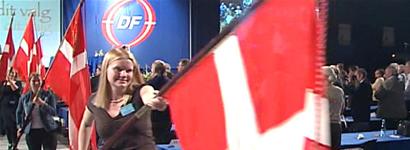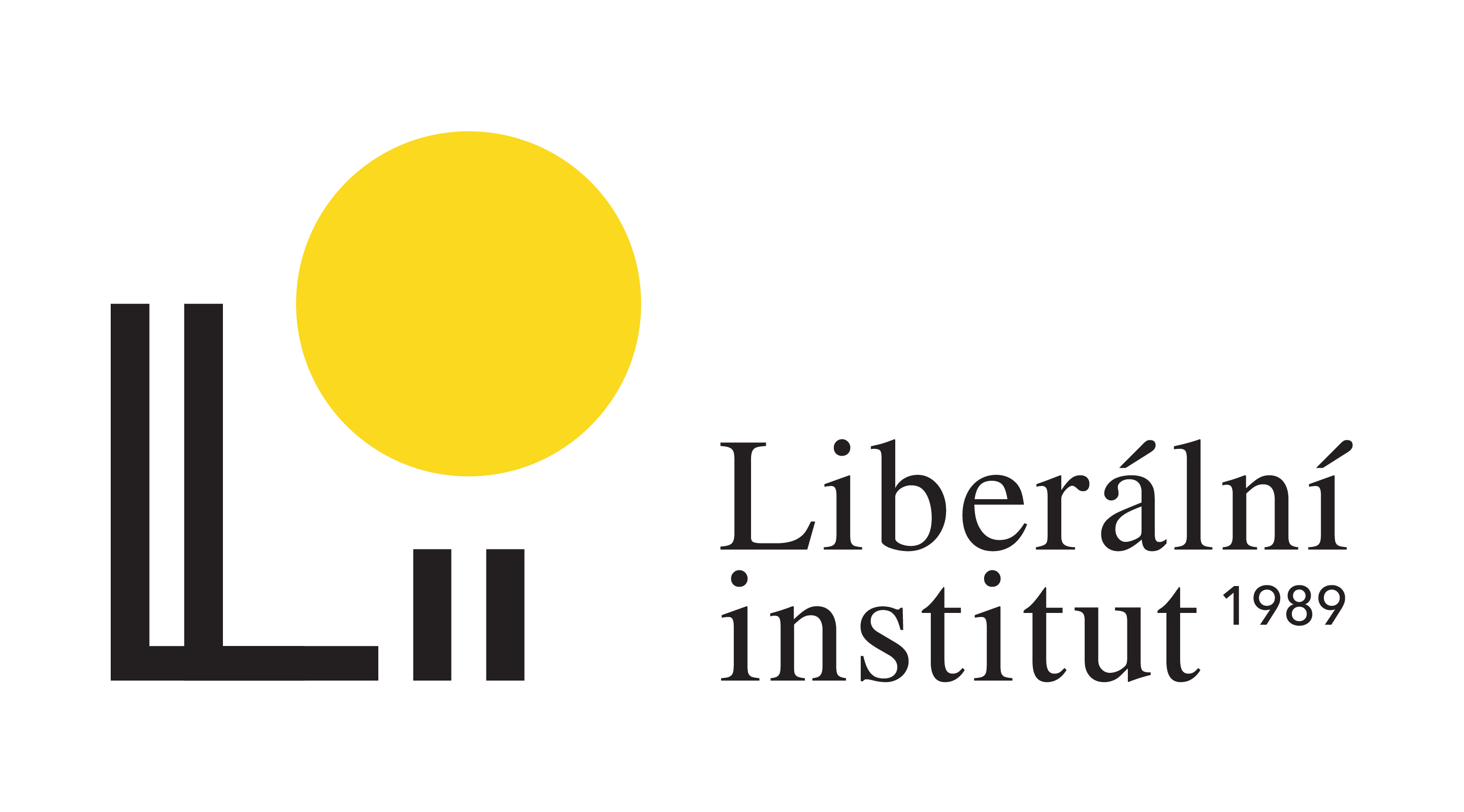Immediately after the WWII extreme nationalist and xenophobic parties were classed as dregs of the[W1] society. Yet this did not put an end to their activity; on the contrary. Metaphorically speaking, their activity and social support have risen up in waves many a time in the decades following the war. And every wave also brought that fundamental to democracy question – the question of the limits of tolerance. We’re talking of limits in plural form on purpose, because it’s not only about the tolerance to extreme positions in politics and society, but also about being open to “otherness” as such.
Today, at the time of a multi-level crisis, we are facing the fourth wave of the far-right mobilization. The process takes place in two ways: initiated by the top, that is, by institutions of the political system, like political parties, but also originating from the grass roots, by non-party organisations (often extreme not only in their rhetoric but also in actions) and on the Internet. These two forces complete each another, and even more, we can witness their convergence taking place in unique new conditions.
Populist parties of the far-right came to the centre of attention of social and academic discourse in the West in the ’70s. In the 20th century, when the so-called traditional parties (socialists, social democrats, conservatists, liberals) began to lose their electorate, their members also started to leave their ranks. The voters who addressed traditional parties with a set of questions – about the values in the new postmaterialist world, environmental protection and sustainable growth, about global imbalance of powers, women’s rights, and migrations in the post-colonial era, and about changing employment patterns – simply did not get any answers. Traditional parties came under fierce attack, and in political studies an idea of the end of political parties was coined – an idea which lasts until now.
The political scene was occupied by the so-called “new politics” – understood not only as a need to become active once again in the face of new political slogans, but also as a result of a sweeping social change and new socio-political divisions which also dictated new organisation of political parties. They were represented by populist parties of the far-right as well as e.g. the Green Party[1].
Far-right parties that were behind the second mobilization wave in the ’60s and the ’70s (George Wallace’s movement in the USA, NPD in Germany, or Front National in France), later, after two decades of being politically marginalised, revived the supporters of the “old system”, who were in fact outside the discourse in the new liberal democracies, and also the groups on the verge of economic exclusion and those disillusioned with mainstream politics. Thus, they made a wise use of electoral niches that resulted from disappointment with the traditional parties and they programmes. In both cases, it was the changing circumstances that conditioned the decision of the social movement (Greens) and organisation (the far-right) to form a political party and participate in election. The changes were in the programme and in organisation of the parties, but later they abandoned radical manifestos and there came chaneges in their structures. The far-right parties started drifting away from postfacist ideology and (in some cases) dropped the organisational structures, like in the case of Italian Movimiento Sociale Italiano, Swedish New Democrats (Ny Demokrati) or Belgium Vlaams Blok.
New populist extreme right which “assumed a political party form” is found also in other European countries and in the democracies of the third wave – post-communist countries.
In order to grasp the nature of radical phenomena in politics and their diversity and influence on today’s political parties we will use two extreme examples: the Danish People’s Party (DF) and the Slovak National Party (SNS).
“Something’s rotten in Denmark”[W2] [W3]
The Kingdom of Denmark – 5,6 million inhabitants; a country ranked high in the world tables in terms of quality of life, well-being of citizens or freedom (World Liberty Index), with immigrant population of about 10% (Statistics Denmark, 2013), 54% being European immigrants (Poles rank 3rd). Danish immigration policy became stricter at the end of the ’80s, at the time of great influx of migrants from the Balkans, which doubled the overall immigrants’ number in the years 1987-1997. The country has been increasing the severity of its immigration policy in the last decade and now it is one of the most stringent in the EU. The political system in Denmark is known to have one of the highest rates of electoral participation (about 80%) as well as parliament consensualism – the parliament seats are usually taken by deputies from about eight parties, so there’s usually a minority cabinet but it lasts thanks to the support of quiet coalition members, i.e. the parties not forming the cabinet officially. Since 2001, one of such parties has been Dansk Folkeparti (Danish People’s Party, DF) – a populist far-right party led by Pia Kjærsgaard.
The history of this party is long and interesting from the perspective of “new politics” party. The formation that DF originates from is Fremskridtspartiet (the Progress Party, FrP) set up in 1971, when a lawyer specialising in tax law – Mogens Glistrup – stirred the public opinion with a series of controversial statements in a TV interview. What they boiled down to was opposition against high taxation in the “unfair” Danish system. Those statements, considered offensive, shook the very foundations of the Danish country. Additional demands concerned fighting the overgrown bureaucracy apparatus, heavy tax burdens and state control mechanisms. The party soon gained higher social support, which in 1973 was 25%. Surprisingly, a brief interest in a transient political party, as the Danish political scene saw FrP, soon turned into stout electoral support. The electoral backing that they received varied between 10% in the ’70s and 4% in the ’80s. And then another moment of stabilisation came in the ’90s when they got 5% support. The strong opposition of the party against the Danish welfare state changed when Pia Kjærsgaard became the party leader (Mogens Glistrup did a prison term for tax offences in 1983-1985). A more moderate style under the new leadership resulted in FrP supporting the government, by which the party was barely tolerated. In the years 1987-1988 FrP tipped the scales and was formally invited to form the government. This also led to a fall-out within the party between Glistrup and Kjærsgaard, as a result of which the former left the party. Pia Kjærsgaard together with one third of the party members established the Danish People’s Party, which after a sudden programme shift to anti-immigrant and anti-EU sentiments, got 7,4% of votes in the 1998 election – which was two thirds more than FrP. Their programme consisted of three sentences: 1. ‘No’ to immigration! 2. ‘No’ to the EU! 3. ‘Yes’ to supporting social assistance for the weakest!
And although in 1998 immigrants constituted only about 6,6% of the population (relatively little compared to other West European countries), taking up the issue of immigration policy change was crucial in that election, which in itself was a milestone for both parties. Danish People’s Party successfully pursued its political career. The media accentuated the party’s strong anti-immigration rhetoric (“Denmark is not a country for immigrants! They need to be deported where they came from. We need to restrict the influx of new foreigners and impose stricter laws on obtaining Danish citizenship!”), the demands for Denmark to step out of the European Union and Schengen Agreement or their opposition to introducing euro. Later on, the party extended its programme by anti-Islamic views and the proposal to maintain the elaborate social policy system, the benefits of which would be applied selectively.
The last decade was immensly successful for DF; they gained 24 parliament seats (out of 179) in 2005 election to Folketing, which ranked them as third biggest party. In later elections DF gained about 13% of support and over 20 mandates. It exemplifies the successful politics of a populist and far-right party, which often tips the scales in a multi-party Danish parliament governed by minority cabinets whom DVP [DF] lends support in exchange for concessions in certain matters. It is also a party that has undergone a far-reaching structural change and cares for its public image, cutting itself away from any racist or Neo-Nazi activities and removing from its ranks any politician that manifests such inclinations.
In Slovakia and the Slovakian way
The Republic of Slovakia – the population of 5.4 million, with a 20% minority population mainly of “historical” origin (the main minorities are: the Hungarian, the Romany and the Czech). The Hungarian minority has been for many years the bone of contention in domestic affairs and in the relationships between Slovakia and Hungary. Slovakia has a parliamentary cabinet system with the president’s powers comparable to the Polish head of the state (though without veto power). It is a multi-party system with a moderate consensus level (majority governments prevail). It’s an example of a political scene which during the transformation period had four party groups – the successors of communist parties, parties/coalitions which resulted from the transformation of anti-communist parties, new parties and the so-called historical parties, which refer to the ones from the inter-war period. And one of such parties is Slovenská národná strana (Slovak National Party, SNS) – a populist far-right party which has formed government three times.
It was set up in 1990 and referred back to an anti-Hungarian nationalist party of the same name which was active at the beginning of the 20th century, though it would be hard to trace any similarities in the programme or – even harder – in the organisation. Under the leadership of Ján Slota – a very controversial politician – it got into parliament and in the period 1990-1992 was one of the leading voices on Slovak separatism. It was the main force of a coalition block of parties and organisations advocating the creation of a separate Slovak country. Apart from SNS, there were other, minor parties in the ’90s that voiced nationalist and anti-Hungarian views, e.g. Slovenská ľudová strana (Slovak People’s Party, SL’S, Slovak National Union – SNJ). These parties, however, have not played a significant role on the political scene, with their support increasingly dwindling. One spectacular achievement that they had was the support for the successful opposition candidate for president Ivan Gašparovič in the 2004 election.
After 1989, SNS has twice formed coalition cabinet with Vladimír Mečiar’s party; first in 1993 and remained in the coalition for a year and later in the 1994 election – victorious for Mečiar – in which they stayed for the whole term. In 1998, despite the potential negative changes in the electoral law, the party got twice as many votes as four years earlier, but the falling support for its ally made it seek the opposition favours.
Set against Mečiar’s authoritative governing style and his competitive strategies towards other parties, which were best seen in his proposals to introduce plurality voting system, the real participation and survival chances of SNS were put to the test. After the disagreement between the leaders, Anna Malíkova and Ján Slota, and the party break-up in 2001, the far-right did not get into parliament but it closed its ranks in order not to suffer more losses. In July 2004 SNS started collecting signatures against the (imputed) autonomy of south Slovakia. In October Slovak newspapers published slogans by the SNS that read: “When in Slovakia, do as the Slovaks do!” The Party of the Hungarian Coalition (Strana maďarskej koalície, SMK) protested against them.
SNS returned to the parliament and cabinet scene in 2006 when it became the third most powerful party and helped Robert Fico form coalition cabinet (SMER). The election campaign was under a controversial slogan “We are Slovaks! Slovak parliament for Slovaks!” which encapsulated the party programme of the last few years: anti-establishmentarian, anti-minority, and especially anti-Hungarian. The presence and activities of the Hungarian minority party (described as “Hungarian chauvinism and revisionism”) were seen as a direct threat to Slovak national identity. The party also sees culture as a potential hazard (perceiving on-going dechristianisation, commercialization, European integration and globalisation as threats). Having been a minor coalition member, SNS has suffered a loss in support in the last election and at the time of crisis got into parliament with a modest 5.1%.
As mentioned before, another wave of the far-right mobilization appeared at the beginning of the 21st century and flooded many spheres of social and political life at the same time in many European countries. A political studies expert, Cass Mudde, in a summary of 30 years of the far-right activities described the ideology as a “normal pathology” of political systems.
The tame the right-wing extremists
Compared to other radical groups, the extreme right seems to be the most “tamed” force, acting within a democratic system of law and order and accepted, or at least tolerated, by its other participants. As we can see, that process of becoming normal sometimes varies in its course. Those who influence it the most are the far-right voters and political decision-makers. Electoral support hinges on a few factors which are similar in Western and in East-Central Europe and include: topics in the programme, style of communication and charisma of the leadership.
Keeping to its fundamental ideology (combining nationalism and xenophobia), the far-right usually addresses topics that have usually been marginalised by the mainstream parties. The minorities remain the main topic; in the West – it concerns the immigrants and in the East – the “historical” minorities that inhabit the country. Another common element is the style of politics practised by them – it’s demagogic in form and contents, targeting those voters who are disillusioned or lost in the meanders of politics, and finally the charisma of the leaders – people who, in the era of personalisation and media-attention, always hit the headlines and prioritize a homogeneous image of the party, both inside and outside.
The process of turning “normal” would not have been possible without another set of factors – the adaptive or open-minded attitudes of political leaders, especially of conservative parties, which, as we have seen exemplified above, enabled the far-right to realise their programme as a part of government, officially or unofficially. This leads to the last and most vital conclusion. The convergence of the far-right takes place not only vertically – when new extreme right parties learn from the errors of their predecessors, follow the tried-and-tested rules of communication and cooperate above the national level (e.g. in European Parliament). Convergence also unfolds horizontally – a fact rarely mentioned by researchers and publicists.
These are the long-term effects of “tamed” far-right groups which are seen in the real life and in the world of cyber-politics. It is both the effects of their policies and also their agitation activity. The extreme-right parties that have existed so far motivate new forms of such activity – non-formal organisations, unofficial groups, or groups or individuals that cooperate on the Internet. A 2013 report by a non-governmental organisation DEMOS clearly points to new Internet groups of extreme right that not only outnumber the party members. but are also more active in the real life (protests and campaigns).
Political parties that operate in the heart of political system influence what’s beyond it, on the one hand, showing how ineffective political activity is and, on the other, making it clear that such “limitations” can inspire radical activity that could not be attempted in politics.
[1] The Green Party is a new group of parties that has motivated the new middle class and younger generation, and also was distinguished by a new party structure. Greens brandished the demands for decentralisation of parties, rotation of leadership, deliberation as a means of arriving at a consensus within a party and always highlighted direct democracy as an alternative to the representative democracy.
Translation: Katarzyna Różańska

























